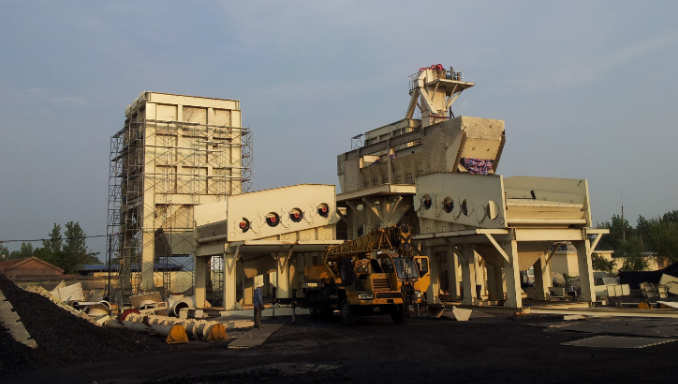
ADVANTAGES OF OUR FAVORSEA DRY DMS PLANTS
- High, efficient separation accuracy - EP value 0.05~0.08g/cm³.
- Same efficiency as Wet DMS plant Water-less Process.
FACTS AND FIGURES
- Feed Capacity: 200tph.
- Separation Density: 1.3~2 g/cm³.
- ROM Separation Size: 13~200 mm.
- EP Value Differentiation: 0.05~08 g/cm³.
- Surface Water Content: <5%.
- Installed Power:466 kWh.
FLUIDISED BED TECHNOLOGY
Dry Beneficiation of Coal by using dry Magnetite and Air in a Fluidised bed technology has been researched from as early as 1926 in Germany. In 1984 Professor Chen Qingru from CUMT (China University of Mining and Technology) developed the dense phase, high concentration, micro-bubblequasi-dispersion fluidised bed dry coal separation theory which fueled the start of the first commercial Dry DMS Coal plants in China.
BACKGROUND
With depleting coal reserves and water sources in South Africa, coal Beneficiation for the Domestic and Export markets with the usual Wet DMS processes is becoming a real challenge.
The Quality of Raw coal sources is becoming a problem due to the Oxidation of the coal and the mining of ‘Young coal” (Lignite). Oxidised coal/ Young coal tends to react with the water in the wet processes and produce challenges.
These challenges are:
- Wet screening of the fines is problematic due to the blocking of the screen apertures due to clay formation.
- Oxidised coal tends to have high Inherent Moisture, and the drying of coal to lower the Total Moisture of the Final Product becomes a big headache.
- The Wet Beneficiation process of coal.
Wet Processing of Coal requires a large quantity of water, and the waste generated ties up a significant amount of water and solids (Slimes and fine saleable coal). Slurry ponds also create a serious environmental problem and a safety issue (Dam breakage), resulting in high investment costs in the construction and building of Double-Stage DMS plants. The recovery of the slimes and fine saleable coal is possible, but it is a high cost, high-investment exercise.
DRY BENEFICIATION PROCESS FOR COAL
The theory of dry separators relevant to coal beneficiation is driven by the Density differences between Coal and the Impurities associated with the Coal seam. Dry Beneficiation Processes are based on the Physical Properties of Coal and its associated Mineral matter.
AIR-DENSE MEDIUM FLUIDISED BED TECHNOLOGY
The Dry DMS beneficiation technology with air-dense medium fluidised bed utilises air-solid (Magnetite) suspension as beneficiation medium with a controllable density of the bed properties to achieve a stable separation zone. The higher density Discard in the feed coal will sink (Density higher than the Bed’s density), and the Product (Density lower than the Bed’s density) will float, thus stratifying the feed materials according to their density.
Dry beneficiation of coal by using dry magnetite and air in a fluidised bed technology has been researched since 1926 in Germany. In 1984 Professor Chen Qingru from CUMT (China University of Mining and Technology) developed the dense phase, high concentration, micro-bubblequasi-dispersion fluidised bed, dry coal separation theory, which fuelled the start of the first commercial dry DMS coal plants in China.
ABBREVIATIONS
| DMS | Dense Medium Separation |
| MD | Medium Density |


